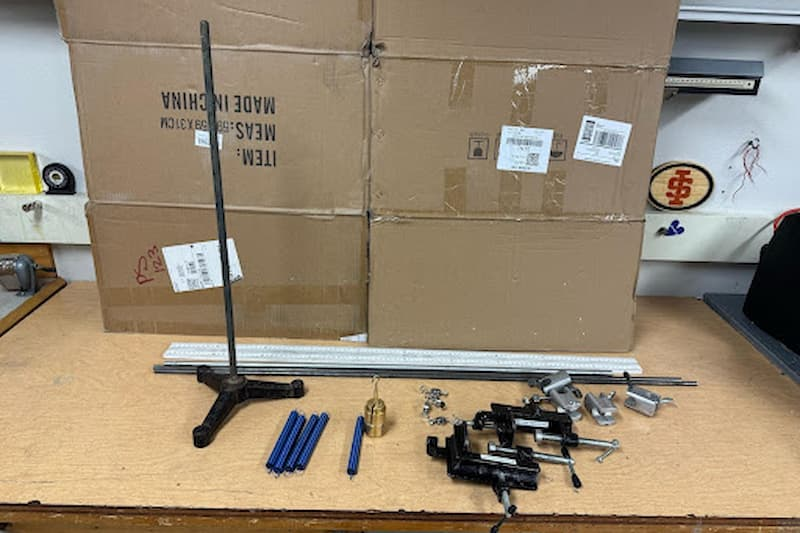Springs in Series and Parallel

PIRA: 1R10.30
Overview:
The springs in series and parallel demo visually illustrates how combining springs affects their overall stiffness, or effective spring constant.
Here's a brief breakdown:
- Springs in Parallel: When two or more springs are connected side-by-side to support a single load, the load is distributed among them. Each spring stretches less than it would if it were supporting the entire load alone. This configuration results in an increase in the effective spring constant, meaning the parallel combination is stiffer than a single spring. Mathematically, the effective spring constant for springs in parallel is keff =k1 +k2 +...+kn.
- Springs in Series: When two or more springs are connected end-to-end, so that the force applied to one end passes through each spring sequentially, the total stretch is the sum of the individual stretches of each spring. This configuration results in a decrease in the effective spring constant, meaning the series combination is less stiff (more compliant) than a single spring. Mathematically, the reciprocal of the effective spring constant for springs in series is the sum of the reciprocals of the individual spring constants: 1/keff =1/k1 +1/k2 +...+1/kn.
In the demo, typically, a known mass is hung from a single spring, then from two identical springs in parallel, and finally from two identical springs in series. By observing and comparing the amount of stretch in each case, the concepts of increased stiffness in parallel and decreased stiffness in series are clearly demonstrated, often reinforcing Hooke's Law (F=−kx).
Materials Needed:
Four metal rods, two table clamps, four 90° clamps, four hanging hooks, one rod stand, a metal yardstick, four springs that have the same k-factor and a known mass.

Setup:
Build a frame using three of the four metal rods, two table clamps, and two 90° angle clamps. On the rod that is horizontal place the four hanging hooks, making sure that they are secure. Hang a single spring from one of these hooks, hang two springs in series from another hook, and the last two are used to show two springs in parallel. The last metal rod, two 90° angle clamps, and the stand to hold up the metal yard stick vertically.
How to:
Place the known mass from each set of springs to show the displacement of the mass.
Safety:
1) Be careful not to stretch the spring too much as this will cause deformation, and the springs are calibrated to the same k factor.
2) Springs are not toys and can cause injury if not used properly; it would be wise to remember this.
